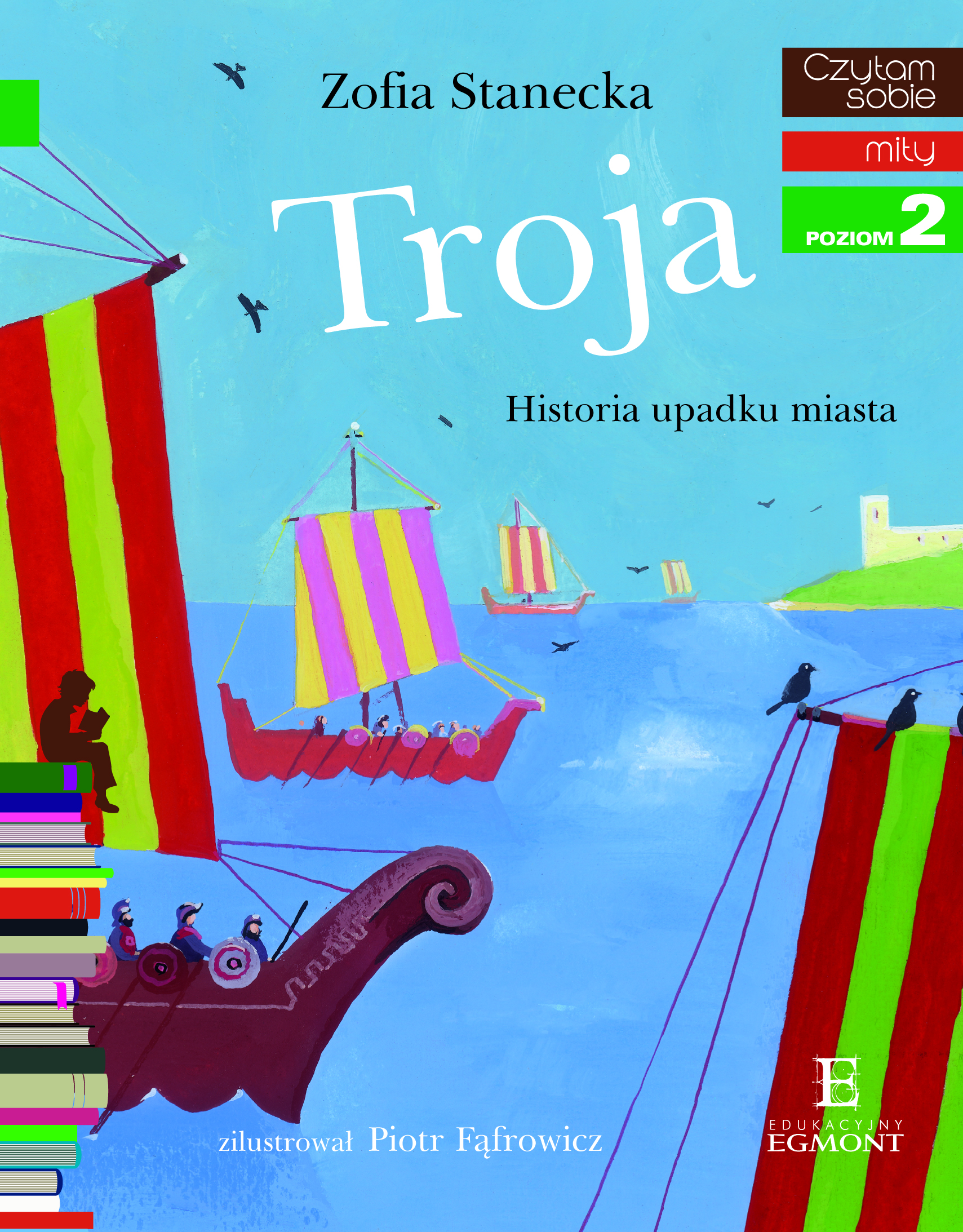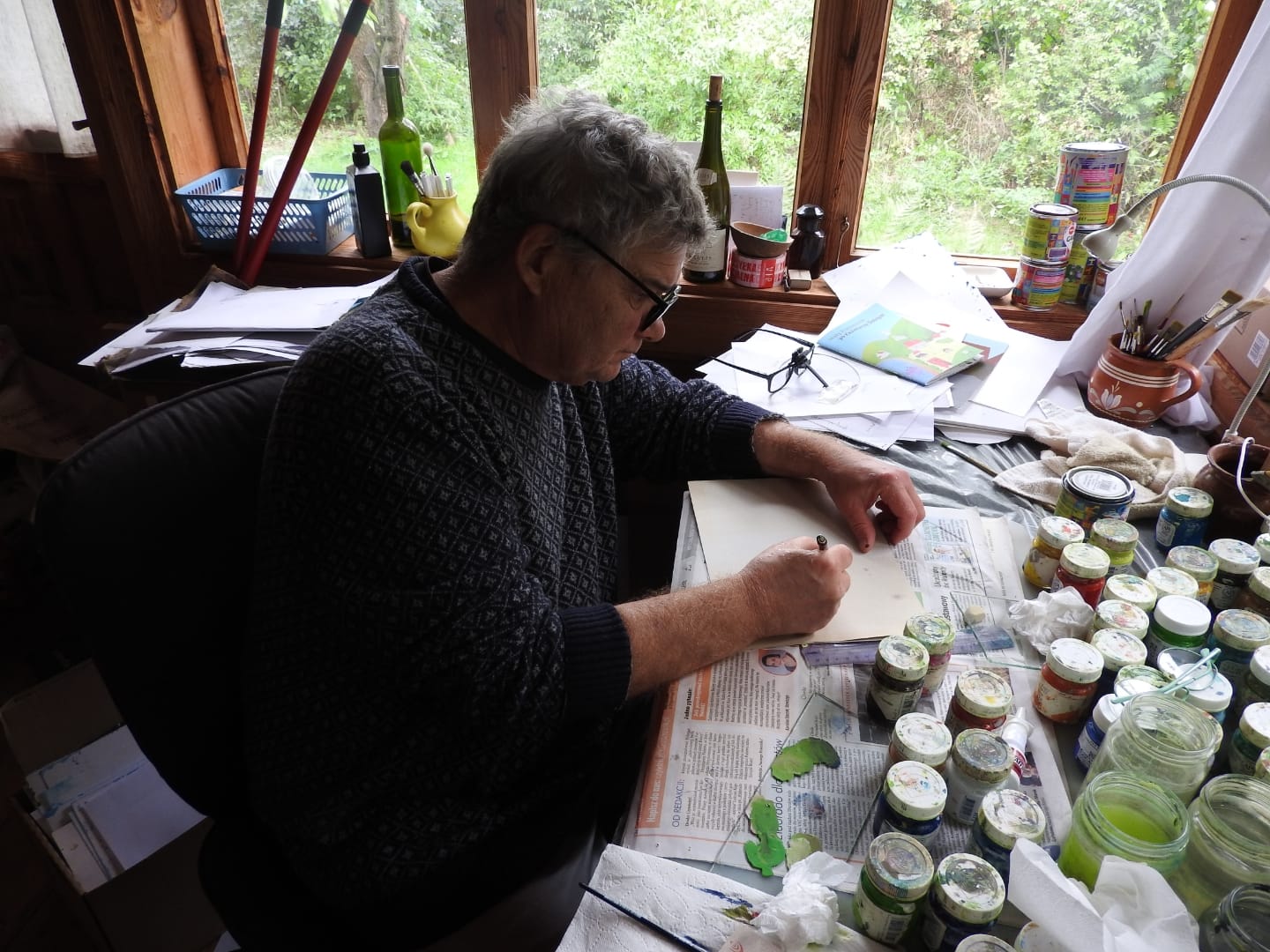Title of the work
Country of the First Edition
Country/countries of popularity
Original Language
First Edition Date
First Edition Details
Zofia Stanecka, ill. Piotr Fąfrowicz, Troja. Historia upadku miasta. Czytam sobie (editorial series). Warszawa: Wydawnictwo Egmont, 2017, 47 pp.
ISBN
Genre
Myths
Picture books
Short stories
Target Audience
Children (6–7 year old)
Cover

Courtesy of Egmont Polska Sp. z o.o.
Author of the Entry:
Krzysztof Rybak, University of Warsaw, rybak.km@gmail.com
Peer-reviewer of the Entry:
Katarzyna Marciniak, University of Warsaw, kamar@al.uw.edu.pl
Susan Deacy, University of Roehampton, s.deacy@roehampton.ac.uk

Piotr Fąfrowicz. Courtesy of Joanna Fąfrowicz-Codemo.
Piotr Fąfrowicz
, b. 1958
(Illustrator)
Piotr Fąfrowicz (1958) studied art history at the John Paul II Catholic University of Lublin. He received a mention in the Book of the Year Competition of the Polish Section of IBBY (International Board of Books for Young People) in 2003 and 2004 and won the award in 2006 for illustrating Wielkie zmiany w dużym lesie [Great Changes in a Large Forest] by Grażyna Ruszewska (2005). Wielkie zmiany w dużym lesie and Leon i kotka, czyli jak rozumieć mowę zegara [Leon and the Kitten, or How to Understand the Language of the Clock] (by Grażyna Ruszewska, 2004) were nominated for the White Ravens: Special Mentions List of the Internationale Jugendbibliothek in Munich (in 2007 and 2005).
Bio prepared by Krzysztof Rybak, University of Warsaw, rybak.km@gmail.com
Zofia Stanecka, portrait by Maria Bernat.
Zofia Stanecka
, b. 1972
(Author)
Zofia Stanecka (1972) is a Polish author best known for the series about Basia [Little Barbara] (2008–), which consists of over 40 titles, among them: Basia i biblioteka [Little Barbara and the Library] (2017), Basia i wolność [Little Barbara and Freedom] (2016), Basia i kolega z Haiti [Little Barbara and Her Colleague from Haiti] (2011). In the series Czytam sobie [I Read to Myself], prepared especially for children who learn how to read, she published – besides Troja. Historia upadku miasta [Troy. How the City Fell] (2017) – Kto polubi Trolla [Who Will Like a Troll] (2012), Troll i zawody [Troll and the Competition] (2013), Koc trolla Alojzego [Alojzy the Troll’s Blanket] (2013), Robot Robert [Robert the Robot] (2013), Kacper i Plaster [Kacper and the Bandaid] (2014), Historia pewnego statku [The Story of a Certain Ship] (2014), Droga mocy [The Way of the Force] (2015), W kraju Polan [In the Land of Polans] (2016).
Bio prepared by Krzysztof Rybak, University of Warsaw, rybak.km@gmail.com
Summary
The story is a brief description of the Trojan War written for children aged 6–7 who are learning how to read. The classical story begins and ends with a pacifist message saying that every war, even if it generates stories about heroic deeds, is a dreadful event that causes tears and leaves towns in ruins.
Analysis
The book briefly presents the Trojan War, what caused it, and how it went, in a simplified way: all the major characters, heroes, and gods are schematically presented to the young reader, usually with their attributes, so that the book can be used as a basic introduction to Greek mythology. The myth is shortened; only the main events are presented (on only 47 pages!). The meaning of the war is presented as an absurd fight, even though the original ancient Greek story is a complex story including many virtues and moral problems, e.g. honour, justice, revenge, courage.



